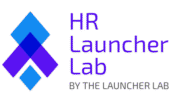An Applicant Tracking System (ATS) is a tool that helps businesses streamline their hiring process. It automates many of the tasks involved in recruitment, such as tracking applications, managing interviews, and communicating with candidates. For small and scaling businesses, selecting the right ATS can save a lot of time and make hiring more efficient, allowing your team to focus on choosing the right candidates rather than getting bogged down in paperwork.
Common Features of an ATS #
Applicant Tracking Systems (ATS) come with a variety of features designed to simplify and enhance the hiring process. Here are some of the common features you can expect from most ATS solutions:
- Job Posting Management: Post job openings to multiple job boards and social media channels from a single platform.
- Resume Parsing: Automatically extract information from resumes, such as contact details, work experience, and skills, to build candidate profiles.
- Candidate Database: Store and manage all candidate information in one centralized database, making it easy to search and filter candidates.
- Interview Scheduling: Coordinate interview times with candidates and interviewers, often integrating with calendars to avoid conflicts.
- Candidate Communication: Automate communication with candidates through email or SMS, providing updates on application status, interview invitations, and follow-ups.
- Pipeline Management: Track where each candidate is in the hiring process, from initial application to final offer.
- Collaboration Tools: Enable hiring team members to leave notes, provide feedback, and collaborate during the recruitment process.
- Reporting and Analytics: Generate reports on key metrics such as time-to-hire, cost-per-hire, and candidate sources to improve recruitment strategies.
- Compliance Management: Ensure adherence to hiring regulations and data privacy laws, such as GDPR.
- Customizable Workflows: Adjust the recruitment process steps to match your specific hiring needs and company policies.
Disclaimer #
The information on this site is meant for general informational purposes only and should not be considered legal advice. Employment laws and requirements differ by location and industry, so it’s essential to consult a licensed attorney to ensure your business complies with relevant regulations. No visitor should take or avoid action based solely on the content provided here. Always seek legal advice specific to your situation. While we strive to keep our information up to date, we make no guarantees about its accuracy or completeness.
This content may contain affiliate links, meaning we receive a commission if you decide to make a purchase through our links, at no cost to you.
For more details, refer to our Terms and Conditions.
